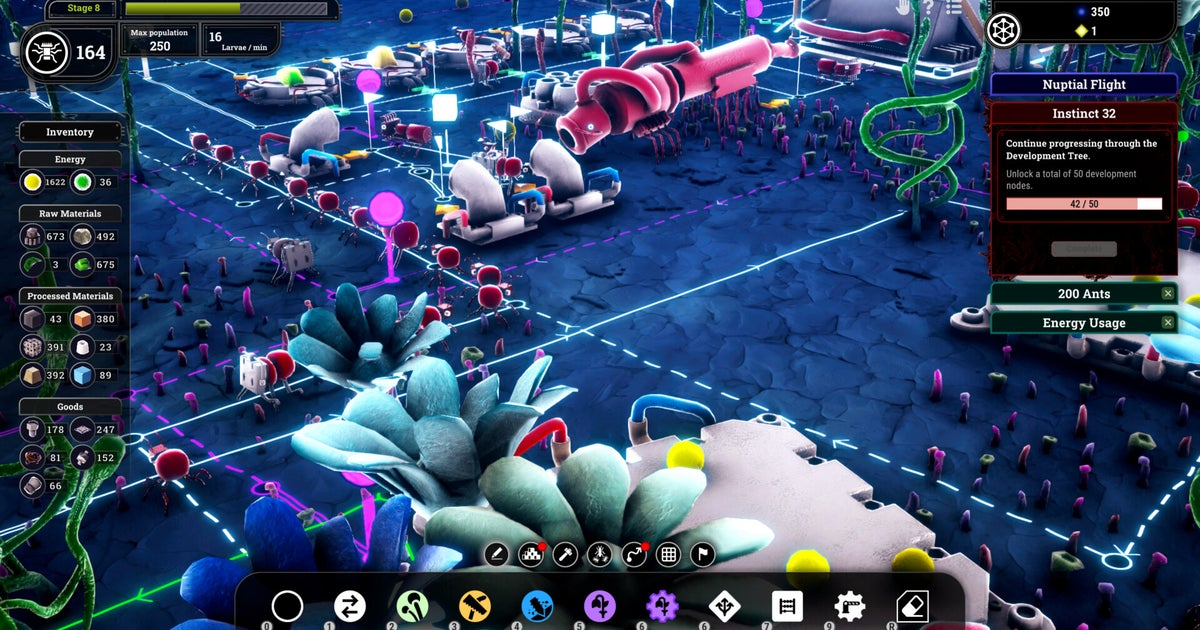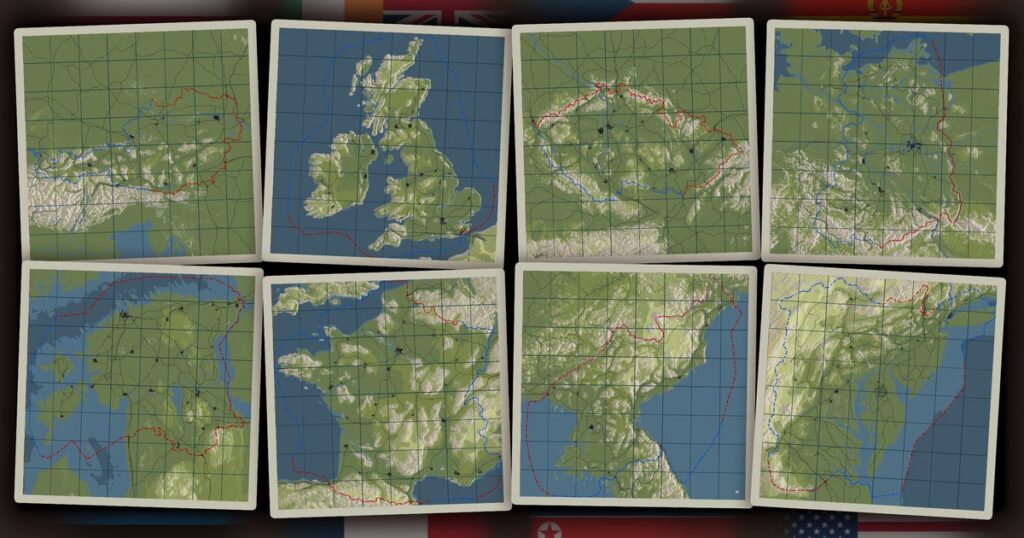Last weekend, when Monster Hunter Wilds defeated us as the first Linh Duong seal, my eyes were arrested by angry movements on the leaves at the foot. Behold, the terrifying extravagant of Microtopia, a strange and attractive factory building, in which your factories are run by cyborg ants.
Created by Cordyceps Collective based in the Netherlands, it provides you with the landscape of the diodes like errors in battery connectors, bolts and scrap for a queen like a pregnant capacitor. The insect strategy game is surprised now, but Microtopia goes a bit further than both in its presentation Eerie Darwin, and when trying to describe how the colonies of the “thought” while responding to expectations for SIMS to manage.
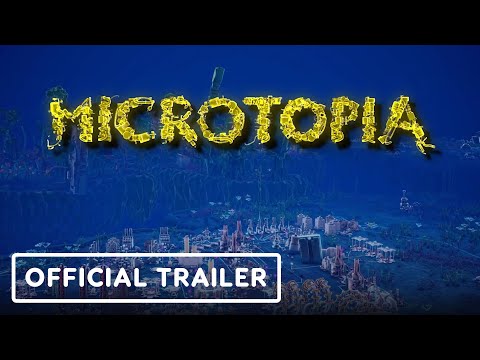 Microtopia – Introduction of the official release date
Microtopia – Introduction of the official release date
https://www.youtube.com/watch?v=linhsky80i
See on YouTube
Although you can direct the individual knowledge, the game is all about placing pheromone roads that link resources or basis together, and decide the behavior of the ants according to them. Repeat the academic research on how the ant teams may be similar to computer networks – also known as “Anernet” – Microtopia describes these roads in the form of circuits, with logic ports, assuming, how many ants can join a specific path or send an equal amount of ants down each path.
Cordyceps developers stumbled in taking care of the concept of “Antennet” of a documentary film Kurzgesagt, and was immediately fascinated by the “natural” scent of individual behavior. “Explorer ‘ants wandered randomly until they found food or another concern,” they told me via email, appropriate response as a group. “Once they do, they follow their own trails back to the colony, strengthening the path for other ants to follow.
“The ants are more successful, the trail becomes stronger,” the developers continue. “When the food is exhausted, the scent is faded and the process of changing resources naturally elsewhere. In essence, this behavior works like an algorithm, in which the simple rules lead to adaptive and complex solutions, similar to the way the slime molds find the effective way. Fiction in mechanical insects is born by no -owner industrial areas.
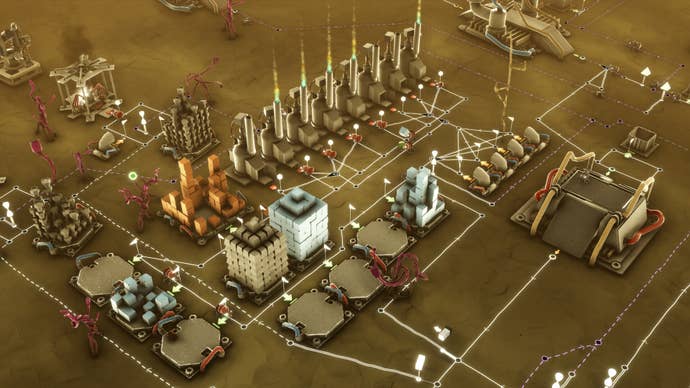
As a frequent fan of Sims Factory, I liked it as Microtopia’s Tycoon HIVOMIND. Although there are many games that you will recognize from other sims, with storage, seminars and factories to create decentralized systems of more specialized construction items, ‘pheromone logic’ all set a change in basic principles and invite to reflect the conventions of plant management games.
Before I went into all that, some driving more observations. First, the control is unique: Once you have spent a pheromone trail, you can seize the buttons and threads and pull them back, this makes it easy to adjust your factory layout and confuse yourself by doing so.
Second, an important structural element is your ants, with different types of workers with different lifespan. Accordingly, your scent trails will eventually develop a horrific embroidery of the bleached and curled rice husk. If you like factory sims, this seems to be a formula for disappointment, but in reality, you can set up everything so that new ants are continuously planted to join your network and giving your queen often enough to maintain your population is an interesting challenge.
If Microtopia stood up as a genre, what made it attractive as a development story is Cordyceps’ understanding of the act of working or against those categories expectations, saying nothing about the idea of ants like machines.
Sometimes, the inspiration of the game has agreed with each other. Take those types of workers. They are not only focused on the needs of a factory sim, but also derived from “ants, a unique feature of social insects, where the members of the same species have different appearance”. The developers also offer their campaigns around the actual process of Gynes producing queens, or younger queens, to fly out and form colonies in other biology.
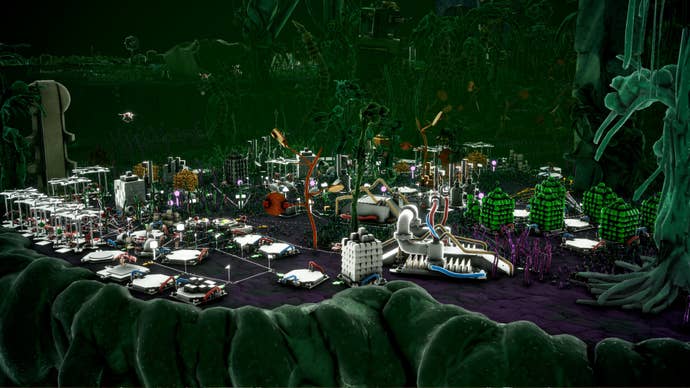
At the most ambitious project, Cordyceps tested, as it is now, let the ants take over the simulation. “For a long time, we originally made the game around the actual ants and experienced quite a lot of repeats,” they said. “Although from the game’s perspective, they are asked to build buildings, Smelt iron and similar things.” They also think about giving “cultural and intelligent” ants, an attractive prospect, although I am not sure what these terms mean in the context – how to identify or measure the culture or intelligence of an insect collective?
Finally, however, developers decided to set limits for ants’ architecture for realistic purposes. For example, Microtopia smells include the lines between the nodes, because the real life ‘Anernnets’ is too “organic and artist” for people to follow, bulge and wrote doodles through the soil, bark and leaves. “It allows easier adjustment and makes the networks greater clear and easy to understand,” Cordyceps commented.
Cordyceps also decided to fight martial arts elements, or simulate real -life clashes between opponent colonies or other insects. “Although the ants of the robot soldier will be great, Microtopia is not a game of destruction,” they explained. “Building the internal activity of a colony takes time and is a very relevant process. After many hours of work, it will not be happy to start again after some rude neighbors have to come and raid your larvae.”
Although I don’t think Microtopia needs a conflict, this feels like a chance to be missed a bit – I can’t help but think of scientists who used Age of Empires as a reference for the ‘invader’ behavior. I am also curious about the competition factor that can affect Microtopia Microtopia of trails such as algorithms: Clearly, some ants can appropriate trails placed by ants from other groups, instead of hunting for food sources. Hacker Ants, perhaps?
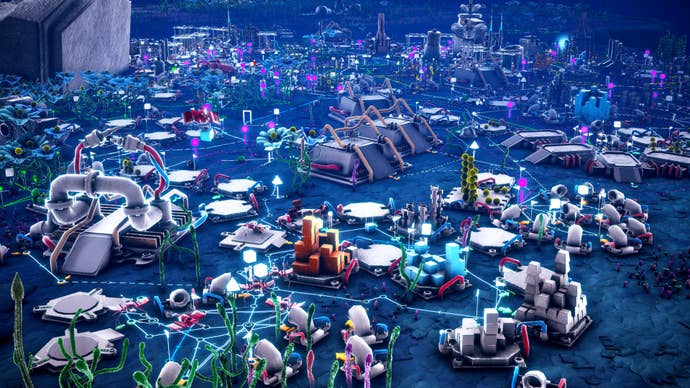
However, above all, I am interested in discussing its meaning to our understanding of ants to describe these creatures and their home is the motherboard or factory, with all related cultural luggage. How to screw all these ideas contribute to the ability to live with them?
Cordyceps hopes that Microtopia against “more classic views of ants” is “pests”, and instead are “industrious” creatures – “a structure associated with different levels in a colony, all cooperating with that grace, as if they are a large creature.” But it is not just adjusting our attitude towards ants. At another level, of course, microtopia is parodying the effects of human industriousness. It opens in the context of a stretched Neon landfill, and the ants are self -propelled electronic waste pieces.
For Cordyceps, Microtopia “is a sarcasm in a way, even in an environment of pollution by humans, life will find a way to survive and develop.” Immediately highly appreciated and warned, it “showed the incredible achievements of nature and kept an example for our human society, in both success and failure.”
